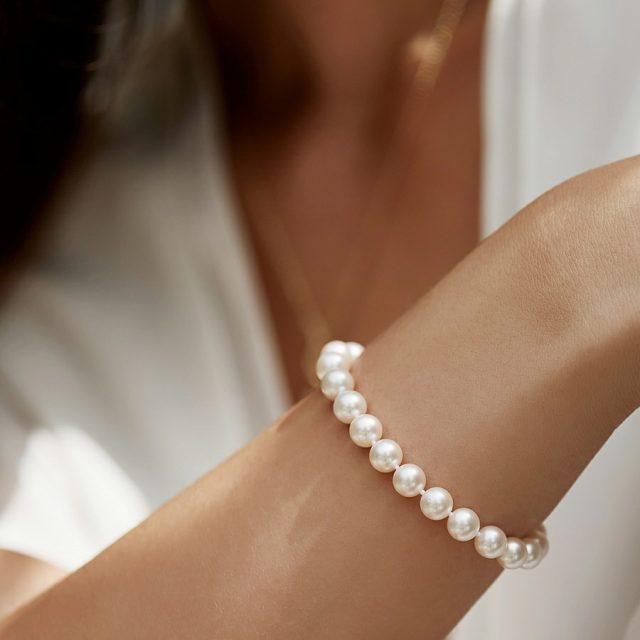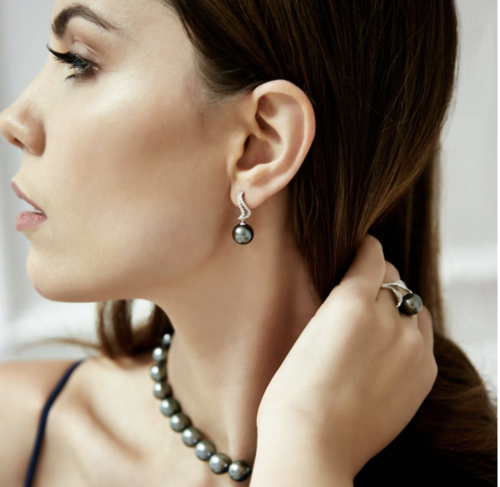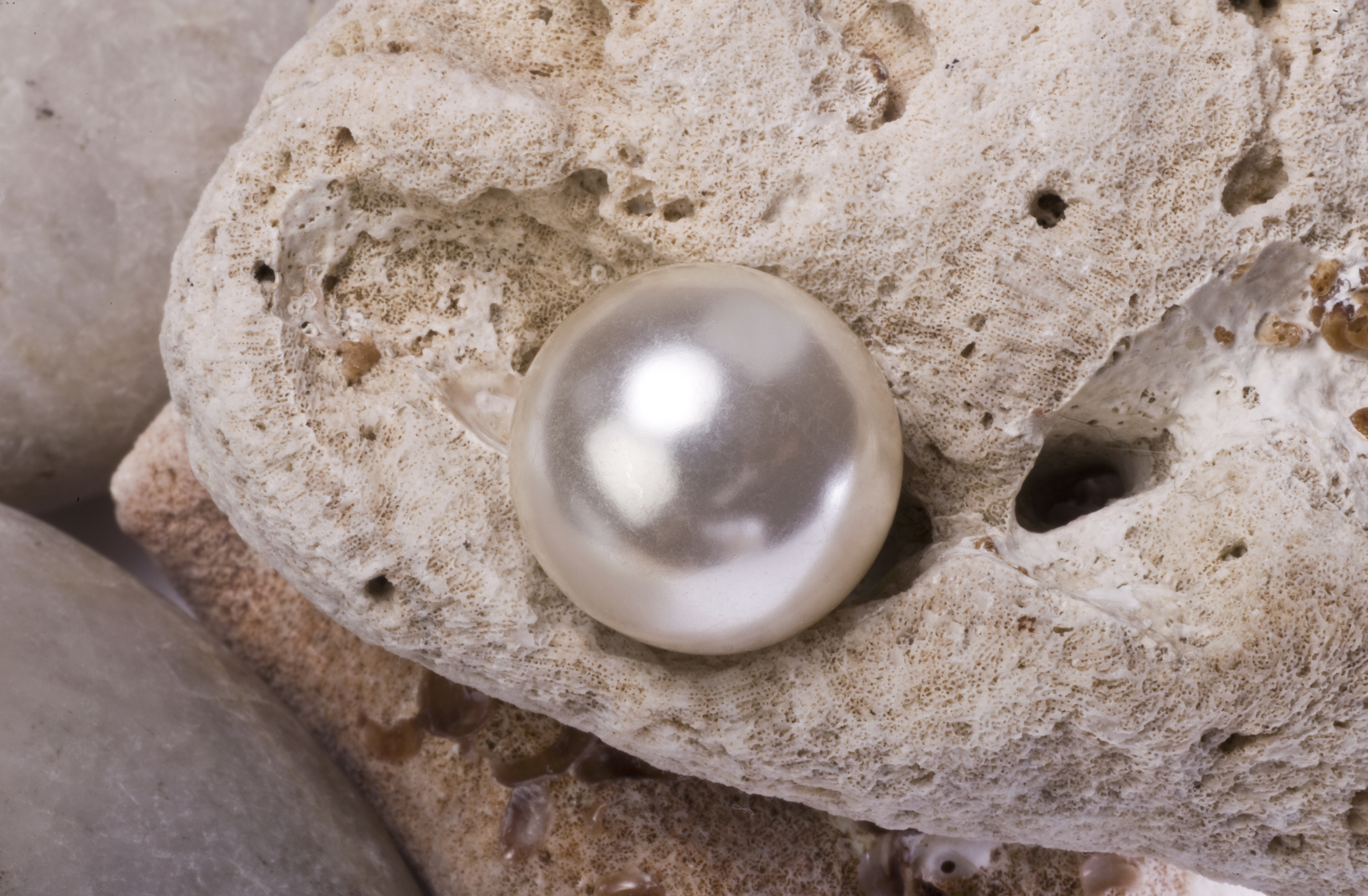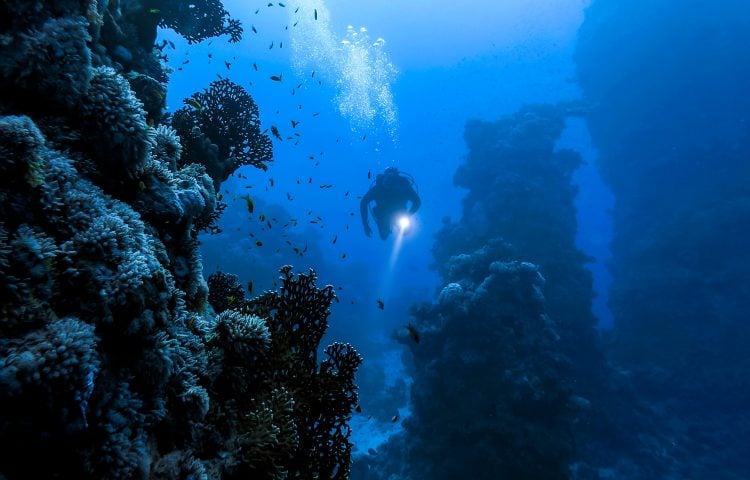They shine under every light, providing endless glow and sophistication. They are iridescent, lustrous and simply alluring. Fact is, the beauty of a natural pearl is simply mesmerizing. While most precious gems are formed in the ground, surrounded by rocks, pearls are the only gemstone created inside a living creature – which adds to their magical, enigmatic appeal. The gems of the seas, aka pearls, are incredibly unique gemstones. But how are pearls made? What are pearls made of? And where do pearls come from? Read on to find out everything you need to know about the pearl formation of natural and cultured pearls.
Pearl Formation – Frequently Asked Questions:
A pearl is created when an irritant (such as a small piece of sand) finds its way into an oyster or mollusk (either naturally or with human intervention). The oyster or mollusk starts secreting a fluid in order to coat the irritant. This coating later becomes a pearl.
Producing a pearl can take a very long time. The actual duration of forming a pearl ranges from 6 months to several years. Prior to producing a pearl, a mollusk needs to mature in order to begin the pearl making process.
A pearl has the same composition as the shell / nacre (mother of pearl, also called nacre), meaning calcium carbonate (aragonite or aragonite mixed with calcite). These are found in minute crystalline form, deposited in concentric layers of nacre.
Imitation pearls are man-made beads that resemble pearls in appearance. The main difference is that they are mass produced and crafted from glass, shells or plastic. Cultured pearls and natural pearls are both considered real pearls, as they are produced by oysters and mollusks. Natural pearls occur naturally and they are incredibly rare. Cultured pearls are farmed in pearl farms, meaning that were not formed by nature alone. Fact is, a natural pearl and a cultured pearl are indistinguishable from each other.
Where Do Pearls Come From?

Where do pearls come from? They are grown inside aquatic creatures – oysters and mollusks. Oysters are a specific type of mollusk that lives in the ocean (producing saltwater pearls like Akoya, Tahitian and South Sea Pearls), while mollusks live in fresh water and produce Freshwater pearls. Pearls form over a period of many years, reaching almost-round (baroque) or round pearl shapes.

PEARL JEWELRY SPOTLIGHT
A pearl bracelet can simply elevate any outfit, be it formal or casual. Classic. Elegant. Refined. Discover our stunning selection of round pearls and baroque pearls, including Freshwater and Saltwater cultured pearls such as Akoya, Tahitian and South Sea gems with unique luster. Have your pick from various colors like white, pink, golden and black pearls, for that perfect touch of glow to any outfit. Make pearls your signature look! Shop our range featuring gems in a variety of colors, statement larger gems, dainty pearls in classic or modern designs and more.
How Is a Pearl Formed?

Pearls are made when a small irritant finds its way inside an oyster or mollusk. This can be a grain of sand or a piece of shell, but, more typically: a little parasite. This irritant bothers the mollusk, which then slowly secretes nacre to protect itself. Nacre (or mother of pearl) is the substance that coats the inside of an oyster or mussel’s shell. The nacre coats the irritant, and the layers of nacre build up over time forming a pearl inside the oyster shell.
Depending on the size and shape of the irritant, the resulting pearl can take on a wide variety of sizes and shapes. The pearl color can also vary based on the part of the ocean or body of water where the mollusk lives. The ideal pearl is perfectly round and luminous. Very often they can also come in unusual shapes and different colors.

It takes many years for enough nacre to build up for the pearl to be finished. Generally, wild pearls take at least seven years to form.
What Are Nacreous Pearls and Non-Nacreous Pearls?
Nacreous pearls are formed of the same substance called nacre that is composed of calcium carbonate (aragonite) and conchiolin. There are many types of nacreous pearls, including Freshwater, Akoya, Tahitian and South Sea Pearls.
In addition to nacreous pearls, there are also non-nacreous pearls that are composed of calcite. Unlike nacreous pearls, these types of pearls can’t be cultivated. The most popular types of non-nacreous pearls include Conch and Melo Melo. Conch Pearls are created by a large marine gastropod called the Queen Conch mollusk, while Melo Melo gems are produced by the marine gastropod species Volutidae, which is a type of sea snail. The colors of these types of pearls range from pink to orange and brown.
Cultured Pearls: How Are Pearls Formed?
When talking about cultured gems, the question remains: how are pearls formed? Because it takes so long for a pearl to form, and they can be very difficult to find in the wild, most pearls on the market today are actually farmed. Farmed pearls are created the same way as naturally occurring pearls. The only difference: the pearl farmers have more control over the finished product. They intentionally insert an irritant and then make sure the mollusk is living in an environment where it will secrete nacre and then produce pearls in the correct pearl color. Cultured pearls usually take about three years to form, since the pearl farmers will insert a larger irritant as the “seed” that would exist in the wild.
Freshwater cultured pearls are farmed pearls which are highly popular and affordable, both the round pearls and the baroque pearls varieties. But how is a pearl formed? What makes a pearl form in its final shape? Freshwater mussels are surgically implanted with many tiny pieces of mantle tissue (a pearl farming process called nucleation). After the nucleation, a sac forms in the freshwater mussels and cells start secreting nacre, forming nacreous pearls over the course of months or even years.

STYLE GUIDE:
PEARL EARRINGS
Pearl earrings are considered one of the most popular types of pearl jewelry. Despite their simplicity, what makes a pearl truly timeless is its versatility and sophistication. Make pearls the highlight of any look by opting for premium gems. At The Pearl Source, we feature a wide selection of pearl earrings, including studs, drop designs and dangle pearl earrings featuring cultured pearls and mother of pearl. With so many different options, all that remains is to choose the pair that perfectly matches your style.
Explore the Beautiful World of Pearls

The way a pearl is formed is a captivating biological process: a tiny piece of sand inside the shell metamorphoses, after layers and layers of nacre, into a veritable gem.
Now that you know the answer to the question ‘how are pearls made?’ and ‘where do pearls come from?’, you should understand why this rare gem is so valuable. The circumstances need to be just right for a beautiful pearl to form. Plus, they take years to be ready to harvest. What makes a pearl valuable is its rarity, type, luster and surface and the prices for cultured gem grade pearls vary depending on these factors. Whether you are shopping for freshwater pearls or saltwater pearls, white or black pearls, nacreous pearls of Melo Melo, round gems or mother of pearl jewelry, make sure that you purchase your gems only from reputable retailers in the pearl industry, who are experts in the process of pearl production, as well as able to offer the best gem quality pearls available.

